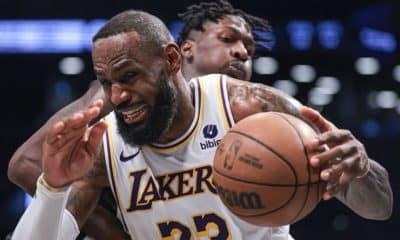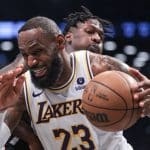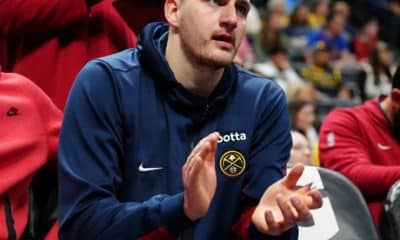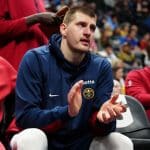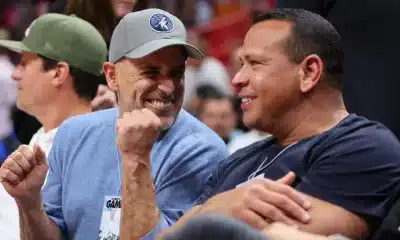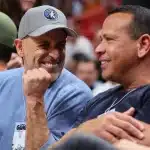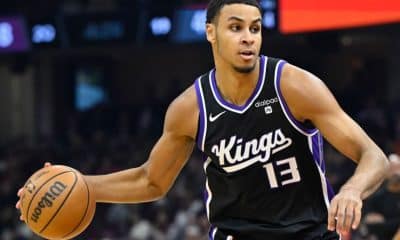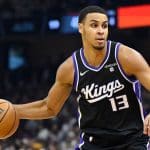NBA
Gauging a Transformational DPOY Race
Ben Dowsett breaks down this year’s Defensive Player of the Year Race
The ever-changing dynamics of the NBA can at times be reflected in the league’s award recipients. Steve Nash’s back-to-back MVPs a decade ago were the first from a “true” point guard since the days of Magic Johnson, and in part set the table for a game increasingly dependent on elite ball-handlers, spacing and shooting. Mike D’Antoni’s selection as Coach of the Year in the same time period sent up many of the same smoke signals, with a recognition that his new brand of basketball was a success. Bird, Magic and Jordan broke a three-decade run of nearly uninterrupted dominance from big men in MVP voting in the late 80s and early 90s, in part beginning to usher the league from the post-heavy days of old to what it’s eventually become a few decades later.
Kawhi Leonard’s selection as Defensive Player of the Year last season was of the same mold. Leonard was the first perimeter player to win the award since Ron Artest in 2004, and only Gary Payton in 1996 joins them as non-bigs to win in the past two decades. The selection, along with second-place finisher Draymond Green, in some ways signaled a recognition that as offense has evolved, elite defense has done the same.
And with Leonard and Green now locked in what’s really a two horse race for the hardware this time around, the point is becoming clearer: The days where only treetops near the basket could make the most significant defensive impact are likely behind us.
True post behemoths have been mostly phased out of the game, and a majority of the league’s top offensive weapons are now ball-dominant perimeter operators – just five of the top 30 players in ESPN’s Offensive Real Plus-Minus this season are big men, and one is uber-hybrid Green. And while bigs at the rim and inside the paint remain vital, there’s naturally been more emphasis placed on individuals capable of checking guards and wings as a result. Guys like Leonard, Paul George and Jimmy Butler would have been great in any era, but have all likely found more notoriety than they may have a couple decades ago because of how well they can match up with the LeBrons, Durants and Carmelos of the world (along with each other, of course).
Green best represents the other growing trend: Versatility is paramount. As probably the most malleable defender in the game, Draymond’s presence frees his Warriors to assume a variety of forms around him while employing more switching and re-switching than any other defense in the league. There might not be five players in the NBA you’d be truly uncomfortable with Green checking, at least for a few seconds at a time – from jitterbug point guards to seven-foot post monsters, Green’s strength, length and mobility combination makes him a shutdown man regardless.
Choosing between the two for this season is mostly an exercise in subjectivity to one degree or another. Defensive Plus-Minus figures have Green second overall and Leonard sixth, but the gap between them is pretty negligible. Both have teammates also among the elites for this defensive value added category – Tim Duncan is first overall and Andrew Bogut is third. Both play 25 minutes a game or less, though, while their Leonard and Green are well into the 30s.
Leonard isn’t without versatility of his own, even if it might not be quite as extreme as Green’s. You can count on one hand the number of primary perimeter ball-handlers Kawhi isn’t the best one-on-one option in the league against – excepting perhaps Stephen Curry or someone like Damian Lillard, the quick-release type who also have the handle to separate from Leonard long enough to get a shot off, he’d be the best choice against nearly any player from the point to the small forward position.
There’s no area defensively where Leonard lacks. He isn’t quite Tony Allen’s ilk as a pure ball-denial specialist, but his work away from the rock is superb, particularly his screen navigation – if a shooter like, say, J.J. Redick starts burning the Spurs up with off-ball action, Kawhi can switch onto him and snuff that out. He’s one of the best rebounders in the league among small forwards, even as his overall percentage here has dropped a bit this season with the Spurs adding size down low.
He’s the best on-ball perimeter defender to this eye since at least Scottie Pippen, and maybe ever. His combination of mirroring opponent action and perhaps the best hands for his size in the entire league are devastating to any penetrator unlucky enough to see Leonard in front of them. On the rare occasion you get a step on him, know the play is far from over.
He jumps passing lanes a beat faster than most guys, and if those mitts get on the ball, it’s his.
He has the quicks and smarts to angle off even the speediest guards in the league, and the strength and length to man up on the block with guys like LeBron, Durant and Melo. That Leonard has maintained his remarkable level despite a much heavier burden on the offensive end of the ball this year makes the performance all the more amazing.
His case is hurt somewhat by the level of dominance the Spurs display defensively even when he doesn’t play, though this phenomenon is overstated in some circles. His DRPM score reveals as much, as it helps balance out on and off court numbers with relevant teammate and opponent context, and even the raw numbers don’t really support the theory – San Antonio allows over five more points per-100-possessions without Leonard than with him on the court, a sample which could represent a 15-spot gap in league-wide team rankings if inserted in the right place. The fact that the Spurs would still be the league’s best defense using only non-Leonard minutes is relevant, but not enough to topple his case when one considers that with him, they’re among the stingiest units of all time.
Green has no such issues with on/off metrics; the 13.1 points per-100 the Warriors sacrifice defensively when he leaves the court are among the most in recent history for a high-volume player. Opponents shoot 42 percent from the field when Green plays, but nearly 48 percent when he hits the bench. Some of it has to do with limited personnel behind him on the depth chart, but regardless, Green’s absence defensively is felt by his team as much as any other player in the game.
The adaptability is his chief calling card, along with an energy level and motor that are virtually unrivaled. It takes an enormous amount of physical exertion to play Draymond’s style, particularly minutes at center which have become even more common with Festus Ezeli sidelined to injury since late January. Green’s distance covered on the defensive end ranks in the top five among big men and in the league’s overall top 50, per SportVU data, a remarkable pairing alongside the amount of time he spends banging with seven-footers down low.
This strength on the interior is perhaps the most physically spectacular part of Green’s defensive game. His low center of gravity at 6’7 is one of his greatest weapons, used to muscle up on guys who at first glance seem likely to bowl him over. Watch him hold his ground against Derrick Favors, giving hardly an inch to a much bigger guy who, per ESPN’s Zach Lowe, recently set the P3 clinic’s all-time record for force generated pushing sideways off one leg.
Making a final choice between the two likely comes down to which variables one weights more heavily. To this eye, Leonard holds the slight edge by virtue of his team’s historical level of greatness in the field in question – the Warriors’ fifth-ranked defense is closer to the 20th-place Knicks than to the Spurs at the time of this writing. Green is easily more versatile, but Leonard is perhaps just the slightest bit more dominant in his marginally narrower areas of operation. Anyone going with Green can’t be faulted in any way.
Whatever your preference, Leonard and Green are helping break the mold of elite defenders. Size and length remain paramount factors, but as the game has moved in new directions, specialists with additional skill sets have begun to rise to the top along with the game’s best rim protectors and shot blockers. Whether their candidacies beget a stronger push in this direction within basketball’s collective consciousness remains to be seen, but they’ve put the shift in motion.
Add Basketball Insiders to your Google News Feed!
-
Main Page 1 week ago
LeBron James joins Michael Jordan as only NBA players with multiple 40-point games after turning 39
-
Main Page 1 week ago
Nikola Jokic 1st NBA player since Oscar Robertson with 26+ points, 18+ rebounds, & 16+ assists in a game
-
NBA 1 week ago
Ex-MLB star Alex Rodriguez vows to keep trying to buy Timberwolves franchise despite rejection
-
Main Page 1 week ago
Kings are 14-5 this season when Keegan Murray scores 19+ points
